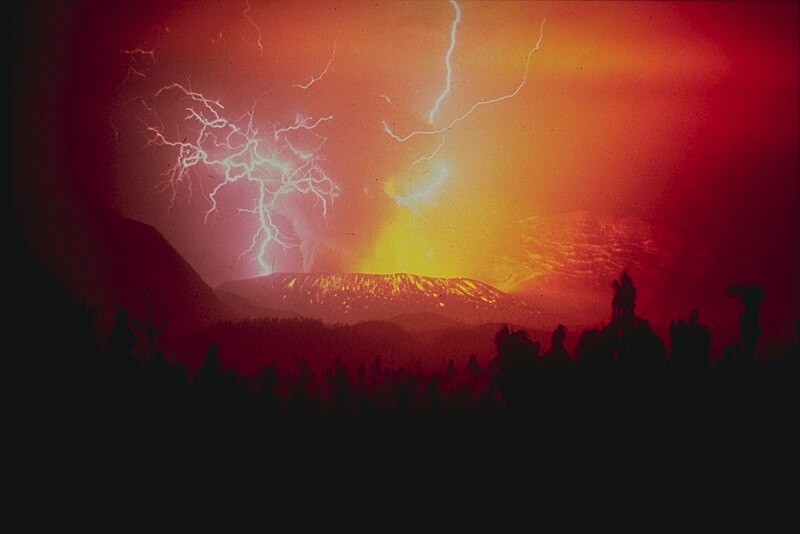Some scientists conclude that life on Earth had extraterrestrial origin, transported from outer space by asteroids, meteors, or comets. A new study, however, claims that it may have started on our planet through volcanic lightning.

What is Volcanic Lightning?
Volcanic lightning refers to a natural phenomenon occurring in a volcanic eruption plume. It has been documented in nearly 200 eruptions over the last 200 years.
Also known as volcanic thunderstorms, this event manifests electrical processes in rising ash columns from explosive eruptions. It generally occurs in two places: close to the ground in ash clouds and the plume of volcanic smoke in the Earth's stratosphere.
For volcanic lightning to occur, there should be colliding, fragmenting particles of volcanic ice, generating static electricity within the volcanic plume. Other factors, such as moist convection currents and ice formation, can also drive the dynamics of eruption plume, triggering volcanic lightning. Volcanic lightning can occur without ice crystals in the ash cloud, unlike ordinary atmospheric thunderstorms.
Life Born in Chaos
At Sorbonne University in Paris, a team of Earth scientists and mineralogists suggests that volcanic lightning may have provided vast amounts of atmospheric nitrogen, leading to life on Earth. Their study is discussed in the paper "Geological evidence of extensive N-fixation by volcanic lightning during very large explosive eruptions."
Led by Slimane Bekki, the researchers visited central Turkey, southern Peru, and a volcanic island off the coasts of Naples in Italy. These sites are known to host deposits of ancient volcanoes.
The team discovered significant amounts of nitrates in the soil, which, after undergoing several tests, were found to be atmospheric in nature. This means the elements did not come from the volcano, but lightning triggered its formation.
On a global scale, nitrate produced by storm lightning is spread out on the Earth's surface. Meanwhile, the nitrate found in volcanic deposits is locally formed in a very short period. According to the study, these deposits can contain large amounts of fixed nitrogen, a prerequisite for life formation.
Nitrogen is the most common element in the Earth's atmosphere and the universe and also plays a vital role in fostering life on our planet. When combined with lightning strikes, this element reacts with oxygen to produce nitrogen oxide, released into the soil, where it can form and sustain life. Previous studies show that nitrates can form from lightning under the right conditions, regardless of whether a thunderstorm or a volcanic eruption caused it.
However, the researchers ruled out the possibility that thunderstorm lightning caused the creation of life because it only produces small amounts of nitrogen. When volcanic lightning formed nitrogen oxide, it released amino acids into the soil, the foundation for creating ancient microorganisms.
The same amino acids can be found in every organism, from bacteria to archaea to humans. According to chemist Stepehn Fried from Johns Hopkins University, this similarity is because all things on Earth are connected through a tree of life, which has an origin, an organism that served as an ancestor to all living things.
RELATED ARTICLE : Tonga Volcano Eruption Created Almost 590,000 Lightning Strikes For 3 Days That Nearly Swallowed Neighboring Islands in the Archipelago
Check out more news and information on Volcanic Eruptions in Science Times.












